New kid on the block, Prime, present the Thunderflash, a brand new 29″ enduro bike. Does the bike with its full carbon frame and sexy lines ride as good as it looks? We were the only magazine in the world with the chance to put it to the test.
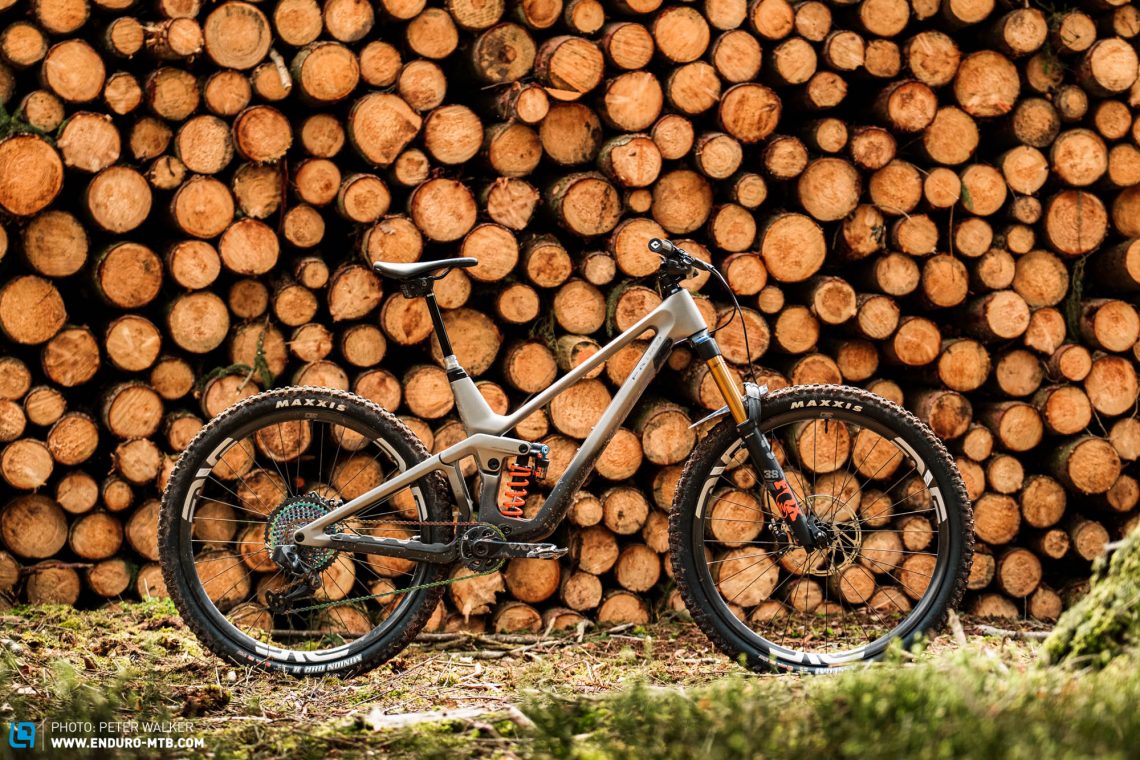
The bike industry is developing rapidly, and along with new bikes, you’ve also got new brands popping up everywhere. One of them is Prime, based in Poland. Peter Siulczynski, the CEO and founder, has already led a World Cup Downhill team and now, after several years in the making, he’s fulfilled his dream of developing his own bike brand. The Prime Thunderflash runs on 29″ wheels and offers an impressive 170 mm travel up front. The bikes were developed and designed in cooperation with the Cero Design Studio in Spain, which was also involved in bikes such as the Mondraker Summum, the Intense M29 and the UNNO Ever. The twin-link rear suspension offers 165 mm travel at the rear and accommodates both coil and air shocks. They also paid a lot of attention to keeping the design modern and consistent throughout, styling the bike down to the finest detail. If you look closely, you will see small splatters on the frame, which get painted by hand – awesome!
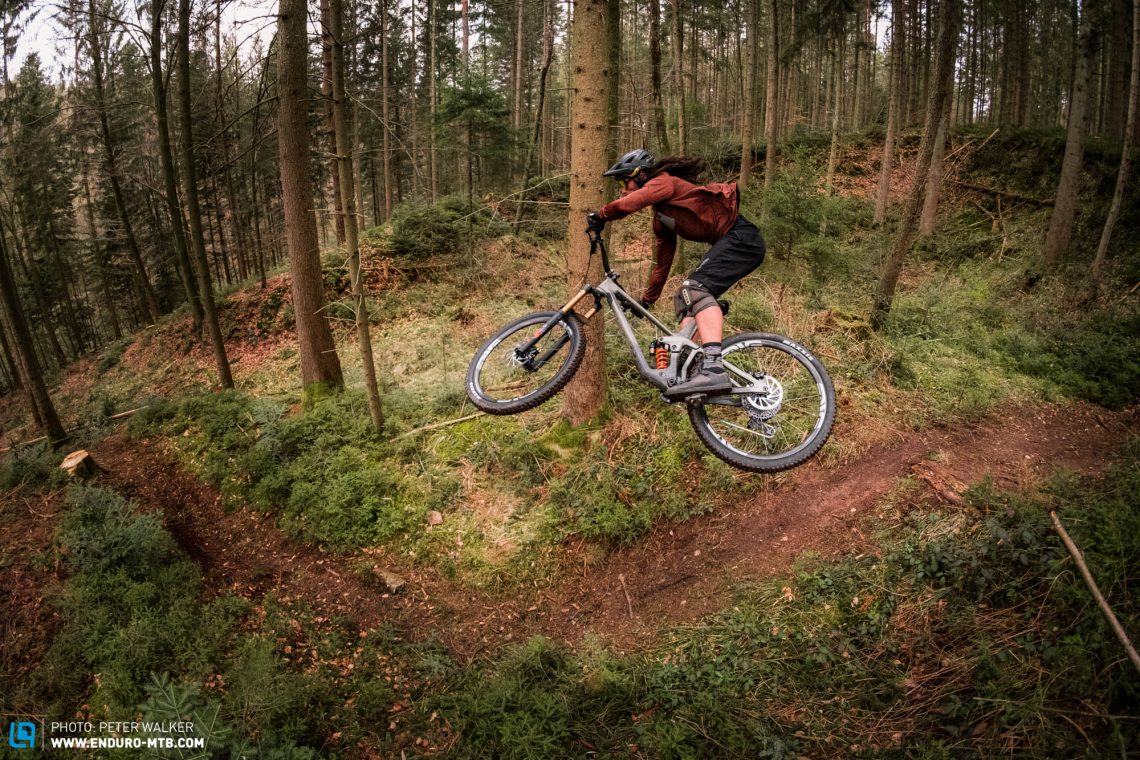
The Prime Thunderflash in detail
Prime rely solely on carbon for the frame of the Thunderflash enduro bike. The flagship Thunderflash RSX tested here weighs 15.04 kg in frame size L. All frames come with sufficiently large chain and seat stay protectors as well as a down tube protector, shielding the carbon frame from chain-slap and flying stones. There is also a small fender at the rear to protect the seat tube from being bombarded with dirt.
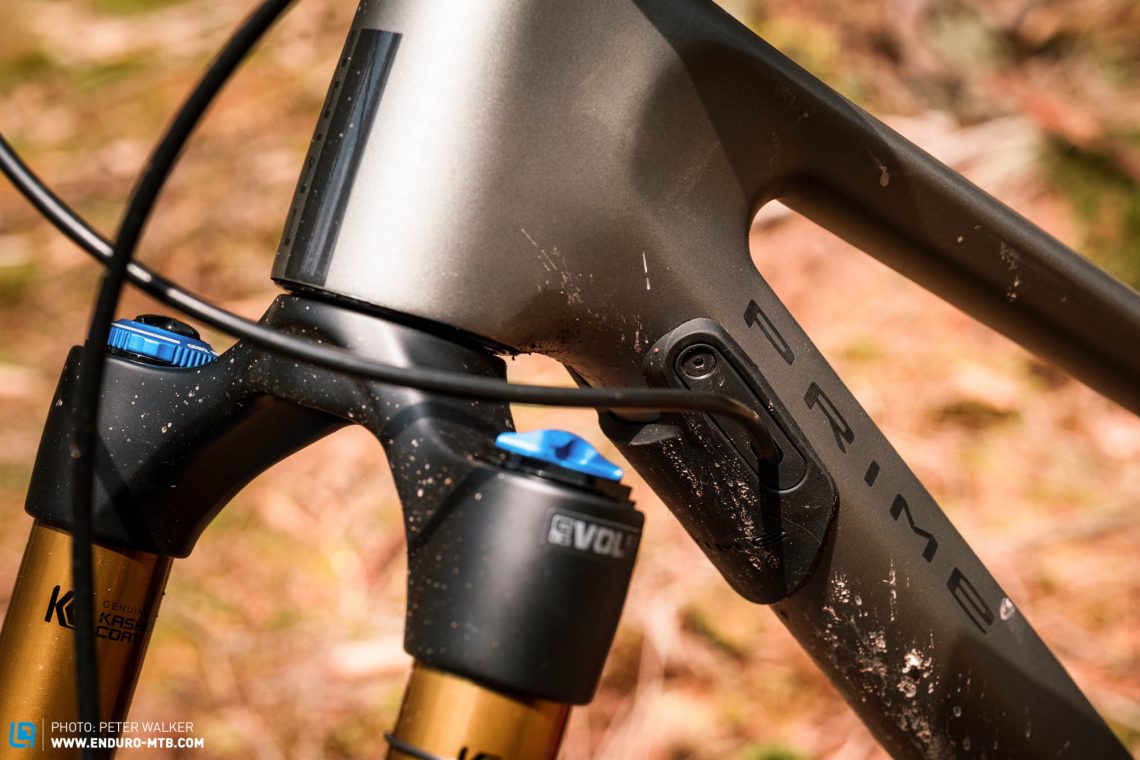

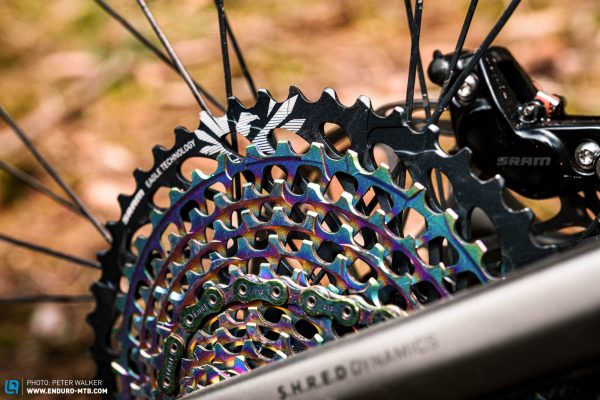

An integrated steering limiter protects the down tube and cables in the event of a crash. It doesn’t bother you while riding, and even if the headset should twist with a hard impact, the frame features an additional plastic bumper to keep it protected. This bumper doubles as a port for the internally routed brake, shifter and seat post cables. If you choose a model with wireless AXS components, the port simply gets covered up – nice! The brake line on the model we tested is neatly routed inside the frame and effectively secured in place. However, it did hang low enough to touch the fork crown, causing a slight rattle on the trail.
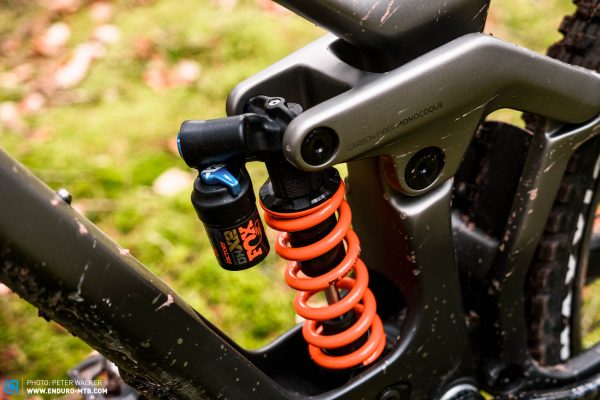

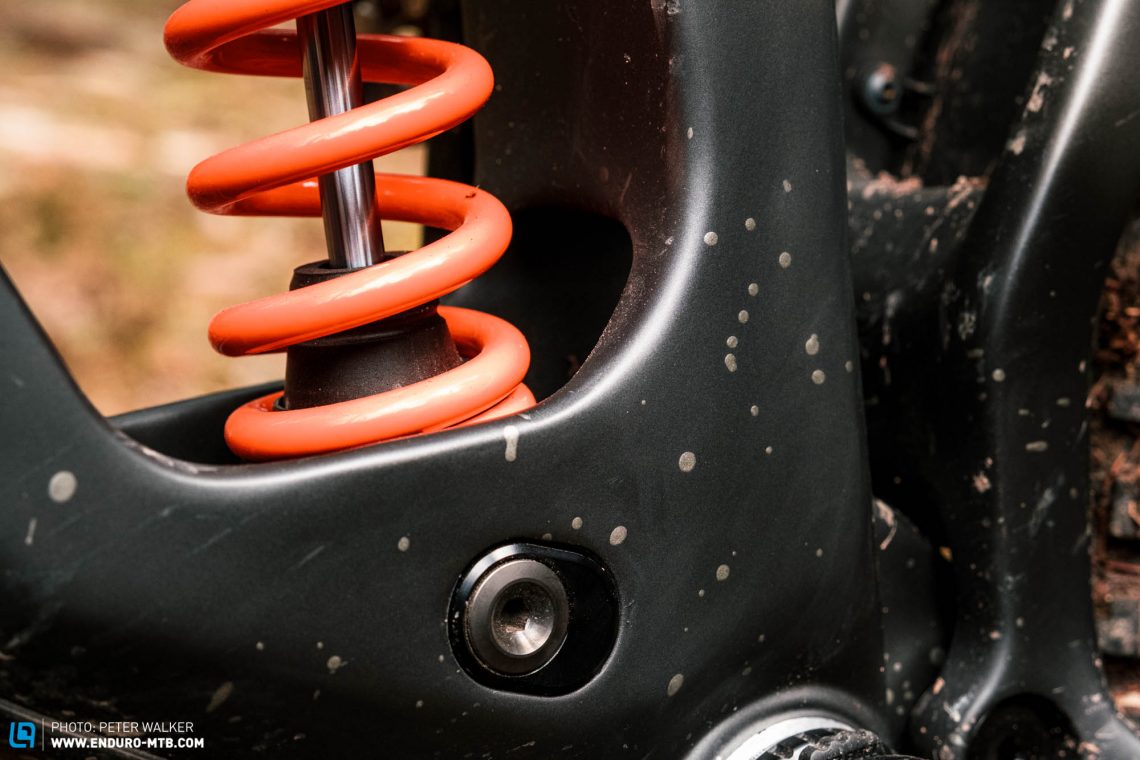
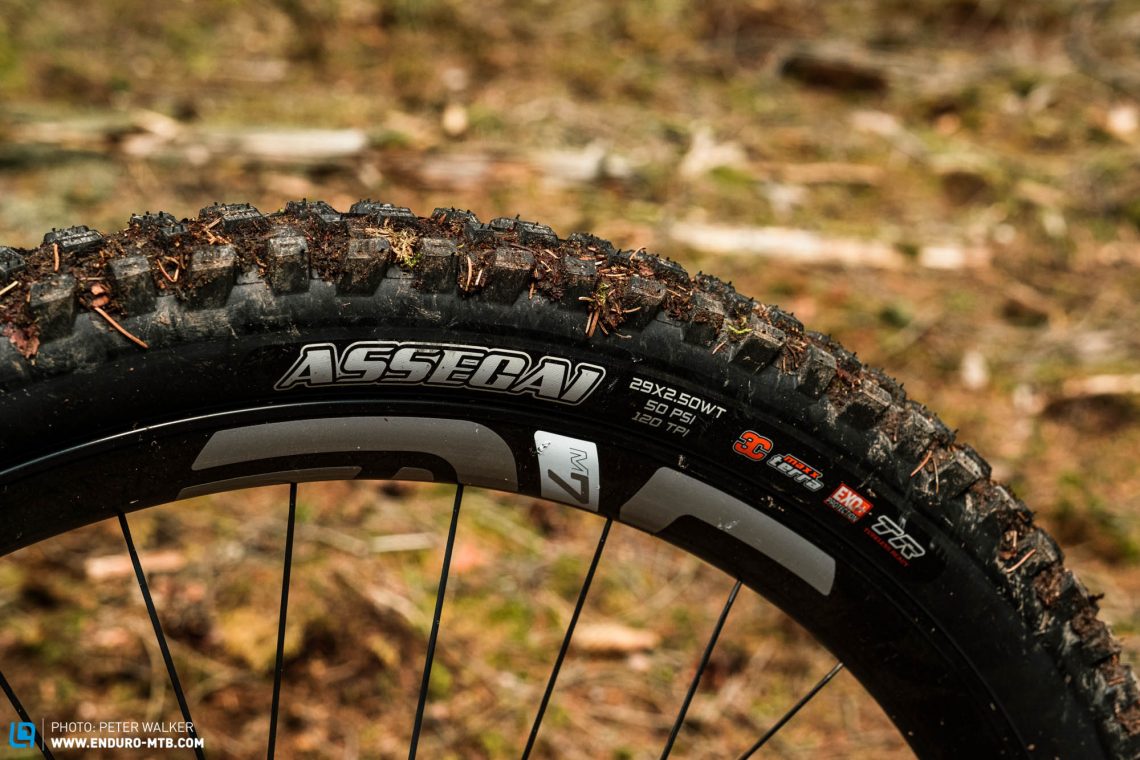
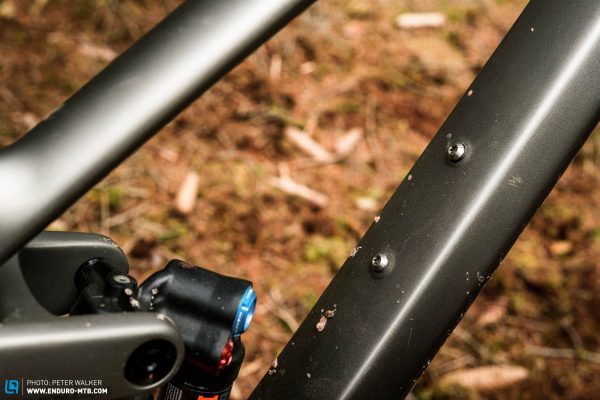

The geometry of the Prime Thunderflash
The Prime Thunderflash will be available in three frame sizes: M, L and XL. We rode the size L, which was a good fit for our 1.85 m to 1.90 m tall test riders. It has a generous reach of 480 mm combined with a stack height of 626 mm and a short 443 mm seat tube, giving you a lot of room to throw your weight around on the trail. The seat post can be dropped all the way, so there’s nothing to stop you from sizing up if you prefer a longer reach. The seat tube measures just 473 mm on the size XL with a reach of 505 mm. However, smaller riders have to look elsewhere as there is no size S and M already has a reach of 460 mm. The rather long 445 mm chainstays are the same length on all three sizes. In combination with the slack 64° head angle, this should make for stable handling. The steep 77.8° seat tube angle puts the rider in an upright and comfortable position on the bike and keeps the front wheel planted even on the steepest of climbs. The geometry you see is the geometry you get as the Thunderflash doesn’t have a flip-chip.
The geometry of the Prime Thunderflash
| Size | M | L | XL |
|---|---|---|---|
| Top tube | 602 mm | 624 mm | 651 mm |
| Seat tube | 423 mm | 443 mm | 473 mm |
| Head tube | 100 mm | 110 mm | 120 mm |
| Head angle | 64° | 64° | 64° |
| Seat angle | 77.6° | 77.8° | 78° |
| BB Drop | 25 mm | 25 mm | 25 mm |
| Chainstay | 445 mm | 445 mm | 445 mm |
| Wheelbase | 1243 mm | 1267 mm | 1296 mm |
| Reach | 460 mm | 480 mm | 505 mm |
| Stack | 617 mm | 626 mm | 634 mm |
The Prime Thunderflash models – builds, prices and availability
All Prime Thunderflash models come with a full carbon frame and 29″ wheels. You can choose from two colours, midnight blue and gunmetal. A frameset is expected to become available for purchase in early 2022, going for € 3,499. Their downhill bike, the Rocket, is also available as of now. Regarding prices, the Thunderflash models range between € 4,999 and € 8,999. You can order the bike directly from the Prime website, which allows you to configure the stock builds to some extent – with certain models, you can opt for an ENVE AM30 carbon wheelset and Gemini Kastor cockpit. All bikes are assembled in Germany and also shipped from there. They will be available from the end of May 2021. Prime offer a lifetime guarantee on their frames for the original owners as well as a 5-year crash replacement, giving you a 50% discount on a new bike if you’ve scrapped your old one.

The components of our test bike – Prime Thunderflash RSX
The flagship Prime Thunderflash RSX model on test comes with a FOX 38 GRIP2 Factory fork and a matching FOX DHX2 coil shock. Taking care of the drivetrain is a wireless SRAM AXS XX1 12-speed groupset with a 10-52 t oil-slick cassette and a bash-guard to protect your chainring. However, there’s no chain guide. On the size L, you get a wireless 170 mm RockShox Reverb AXS dropper post. Keeping your speed in check are a pair of powerful SRAM CODE RSC four-piston brakes combined with a 200 mm rotor up front and a 180 mm model at the rear. Unfortunately, the small rear brake rotor overheats on steep descents and doesn’t do justice to the bike’s potential. We recommend fitting a larger rotor for a more consistent braking performance. The Renthal Fatbar Carbon handlebar is 780 mm wide and looks neat in combination with the AXS controllers. On the ground, you’ve got a pair of MAXXIS tires with the puncture-prone EXO+ casing – a 2.5″ MAXXIS ASSEGAI up front and a 2.4″ MAXXIS Minion DHRII on the rear. On our test bike, both versions were fitted with the harder MaxxTerra rubber compound. However, Prime assured us that a MAXXIS ASSEGAI with a soft MaxxGrip rubber compound is fitted to the bikes for end customers. You’ll do well to change these for something more robust if you want to protect the ENVE M 730 carbon wheelset. Our advice would be to go for the Doubledown casing. For more suitable options, check out our big tire group test.
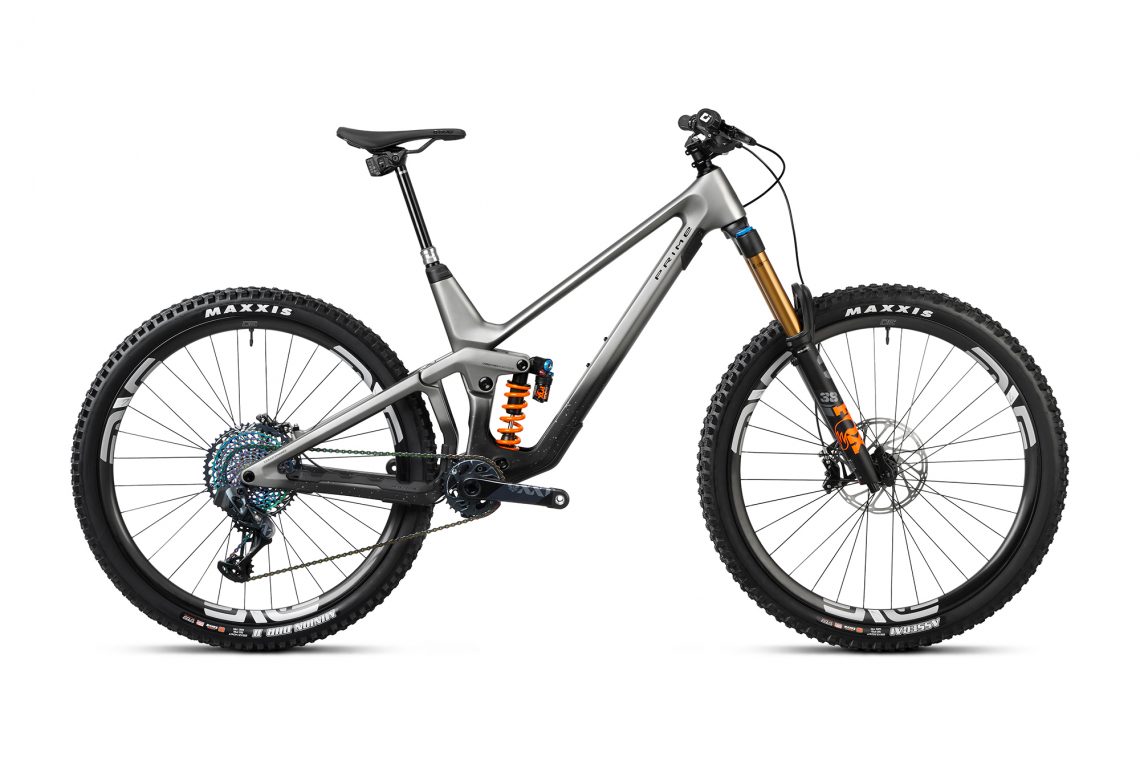
The sensible alternative – Prime Thunderflash C
The most affordable build is the € 4,999 Prime Thunderflash C. It comes with a FOX 38 Performance Elite fork, which performs almost as well as the Kashima coated top-end model, combined with a FOX X2 Performance Elite air shock. The shock doesn’t allow you to adjust the high-speed rebound and compression, though it can be fine-tuned with volume spacers. The Thunderflash C model features a SRAM GX 12-speed groupset, which performs brilliantly and is just slightly heavier than the considerably more expensive X01 and XX1 models. You also get SRAM CODE four-piston brakes. However, these are the less powerful R variant that doesn’t offer tool-free brake and pressure point adjustment or the SwingLink technology of the RSC model. As with the flagship bike, we recommend fitting a larger brake rotor at the rear. Instead of relying on carbon, you get a set of robust DT Swiss EX 1700 aluminium wheels. If you’re looking for a more affordable alternative, the C model features the same high-quality full carbon frame and all its features, combined with less showy yet decent components – it certainly offers the best value for money.

The Prime Thunderflash RSX on the trail
We were the world’s only magazine to have the chance to test the Thunderflash RSX, and we’ve already clocked over 5000 metres of altitude on a wide variety of flow, high-speed and tech trails to give you an initial impression of how it rides. The Prime impressed us on the climbs with a balanced riding position that remains comfortable on long rides. The suspension generates plenty of comfort yet doesn’t require you to activate the climb switch, no matter how steep the gradient. The bike pedals efficiently with the shock open and generates sufficient traction on technical terrain. Navigating tight corners, the Prime responds to steering input without having to weigh down the front.
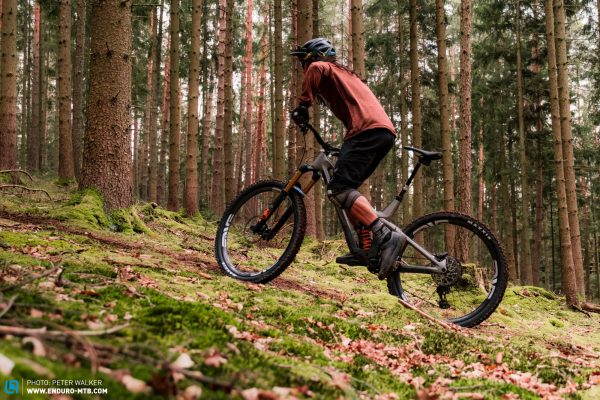
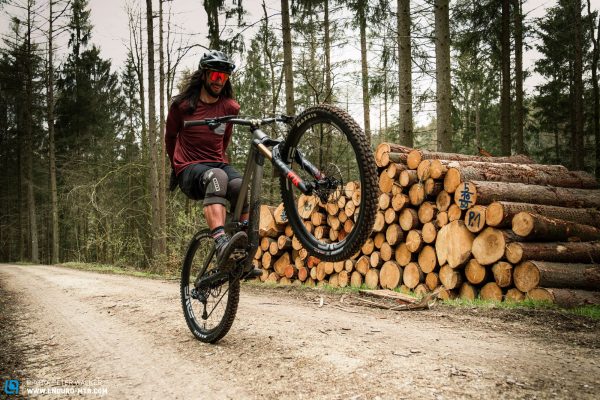

Going back down, you’ll find yourself positioned centrally between the wheels of the Thunderflash. The bike’s handling is intuitive, keeping your weight evenly distributed across both wheels and thus generating lots of grip through the corners. The steering is direct and precise, allowing you to hit every line you choose. Thanks to the suspension’s ample mid-stroke support, you can generate speed by pumping the bike through berms and rollers. As such, the Prime is a lot of fun on flowing, relatively flat trails. Nevertheless, it generates sufficient traction when things get rough and has the reserves to cope with large jumps and drops. Its handling is composed at high speeds and instils the rider with confidence. All in all, the Thunderflash is suitable for everything from flow trails to technical and demanding descents.
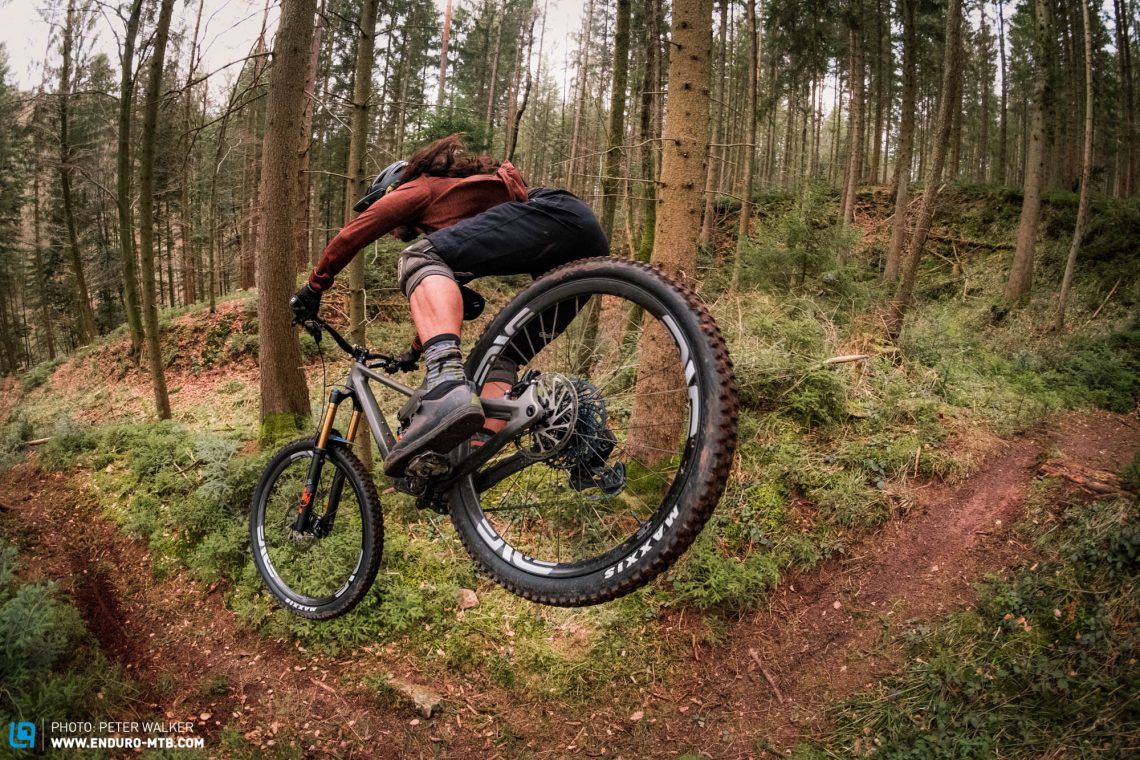


Our conclusion about the Prime Thunderflash RSX
Prime seem to have gotten many things right with the new Thunderflash enduro bike, making an excellent debut. The frame offers high-quality workmanship, plenty of useful features and is specced with a lot of high-end components, though the build isn’t perfect. Thanks to its comfort, the bike lends itself well to long days in the saddle and is a very capable climber. It’s a ton of fun on flowing jump trails and really comes into its own on technical, high-speed descents.
Tops
- lots of mid-stroke support from the suspension
- efficient enough to forgo the climb switch
- intuitive, precise handling
- great looking frame with smart features
Flops
- small weaknesses in the components
- brake line rattles on the fork crown
- no size S to accommodate small riders

For more information, visit the Prime website..
Did you enjoy this article? If so, we would be stoked if you decide to support us with a monthly contribution. By becoming a supporter of ENDURO, you will help secure a sustainable future for high-quality mountain bike journalism. Click here to learn more.
Words & Photos: Peter Walker









